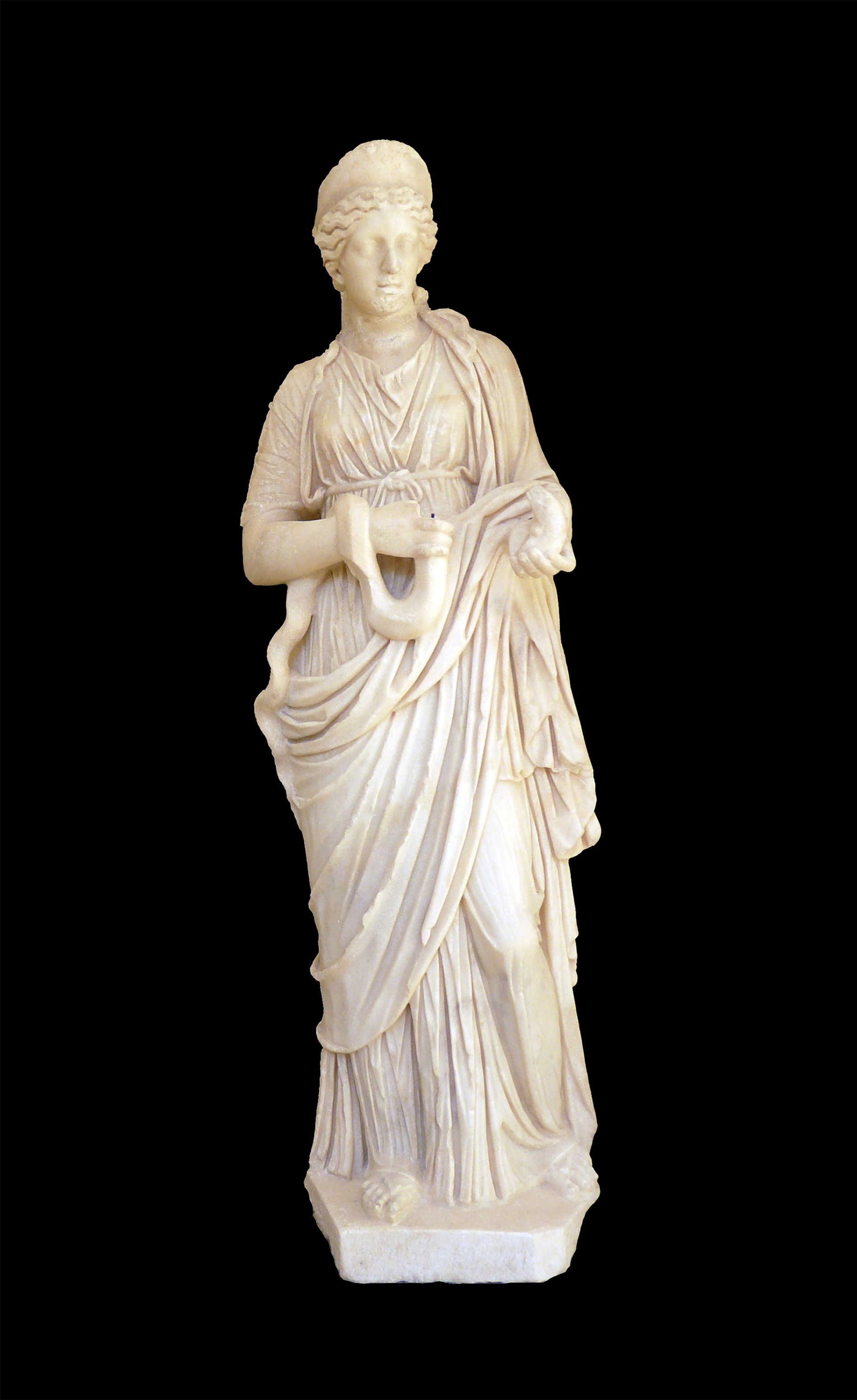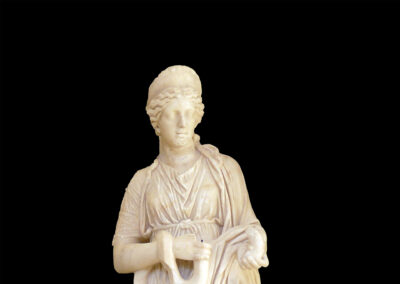This Roman replica of a classical model from the late 4th or early 3rd century BC is one of the few to have retained its original head. Hygieia is depicted as a young lady with her hair combed in waves, wearing a large diadem and her hair tied up in a bun from which a few strands fall over her shoulders. According to Professor Trunk, this type of head is not specific to the representation of Hygieia, but shares the same pattern, which must have originated in contact with the work of Praxiteles, with other goddesses such as Aphrodite and Artemis. The main attribute of this minor goddess, which she shares with her father, Asclepius, with whose cult she was associated, is a large snake which she gives to drink. If the head of the model is from the late Classical period, the slender construction of the figure, with its high, tight-fitting jiton, would suggest that it dates to the early Hellenistic period. On the other hand, from the type of carving of the folds of the garment, the broad, coarse hairstyle and the eyes, this Roman replica must be the work of the Antonine period.



